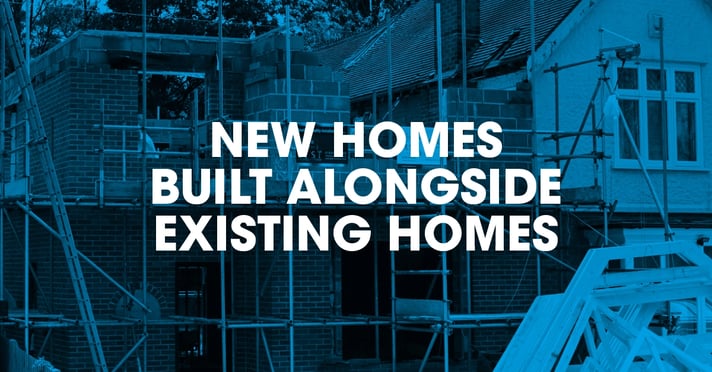Details
Considerations:
- Our New Homes policy would not exclude the existing wall from Warranty cover, as it forms part of the 'continuous structure'.
- The existing wall and its foundation may be structurally unsound.
- If the two homes are not constructed independently, there could be differential movement. This may potentially cause structural damage to one or both homes and may affect the weatherproofing of both buildings.
- The existing wall may not adequately resist the passage of sound.
- The existing wall may lack the necessary damp proofing.
- If a new leaf is not to be built, it is necessary to inform the client that the existing wall is a 'Party Wall' and that they are required to comply with the Party Wall etc. Act 1996.
Recommendations
In most cases, the new home should be an independent structure (this would also be our preference) with a new wall constructed alongside the existing wall. The new wall should be supported on a new foundation, independent of the existing foundation, which will require an Engineer's design.
No load bearing components shall be built into or be supported by the existing structure.
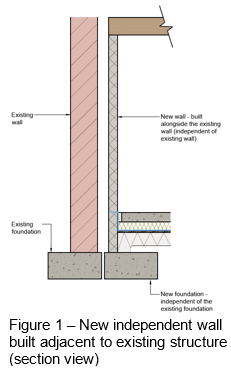
However, there may be situations where it is possible to retain the existing external wall as a new separating wall. In these cases:
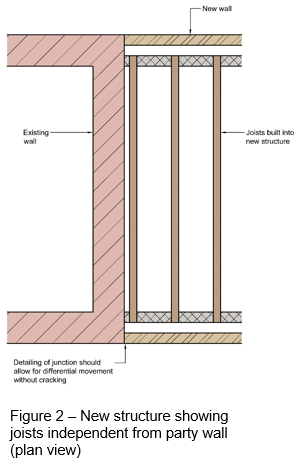
- There should be a Party Wall Agreement (not Scotland) in place, drawn up under the Party Wall etc. Act 1996 and this should be made available to our Underwriters. Please note that this requirement will be relevant where the applicant is not the owner of the adjoining property.
- Confirmation will be required that the separating wall meets the relevant requirements of the Building Regulations i.e. for structural stability and sound resistance. Details and specifications to confirm how they achieve compliance will be required. A Structural Engineer's report may be necessary in some cases to prove the structural stability of the wall.
- The junction of the new walls to the existing walls should ensure that dampness cannot track back into the new home or the existing home.
- An effective ‘horizontal’ DPC should be present in the existing wall which must be linked to the new DPC and DPM of the new home.
- At the junction of the existing and new structures, detailing should allow for differential movement without cracking. Any settlement should be limited to 2-3mm (which would not normally adversely affect the roof covering). A Structural Engineer's report on how this can be achieved will be required, which must take account of the local ground conditions.
- Joists, rafters and trusses from the new structure should be independent from the party wall as shown in figure 2.
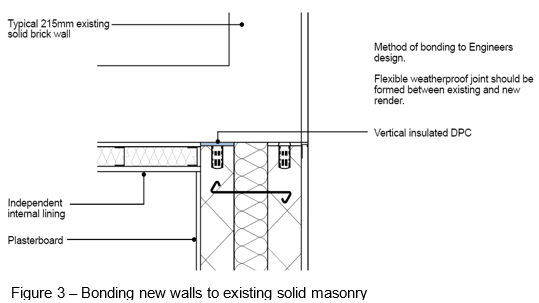
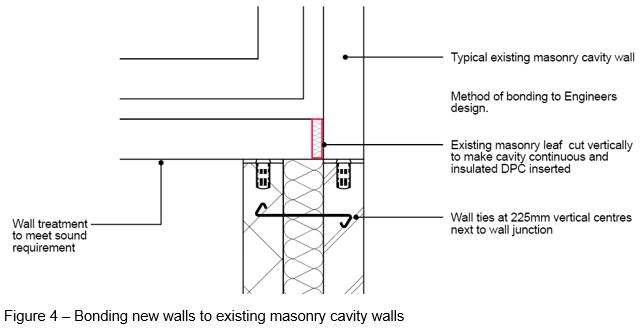
For more information relating to the above please see ‘Appendix D’ of the Technical Manual.
